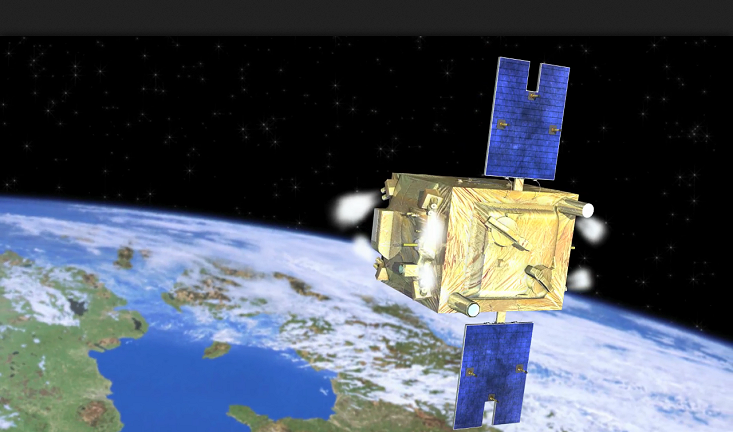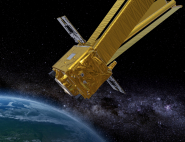Mission

SCIENCE GOALS
The generally admitted theory to describe gravitation is the Theory of General Relativity, founded on the equivalence principle. Einstein advocated this principle, considered empirical since Galileo and Newton, as the fundamental postulate of his theory.
According to this principle, the physical laws in a reference frame in free fall in a gravitational field are equivalent to the physical laws in an inertial reference frame. An elementary consequence of the principle can be stated as follows: the trajectory of a body falling in free fall (i.e. a body subjected to no interaction of the electromagnetic type for example) depends neither on its internal structure nor on its composition.
The main reason for testing this principle is that gravitation, the first of the known fundamental interactions, has so far resisted all attempts to unify it with other fundamental interactions–electromagnetic, weak nuclear and strong nuclear interactions. These are described according to a model of quantum field theory, the Standard Model of particle physics, whereas gravitation is described by a classical theory–General Relativity–which connects the geometry of space-time to the density of matter-energy it contains. The most recent theories of unification, such as string theory, thus seek to find a coherent description of gravitation and other interactions. All of these theories predict the existence of a new interaction which depends on body composition. Whatever its origin, a possible new force could, if superimposed on gravitation, be highlighted as a violation of the equivalence principle. Testing this principle, in particular through the universality of free fall, implies that we seek to identify and characterize this new interaction.
- The mission's main objective is to test the equivalence principle (EP) with an accuracy of 10-15, i.e. 100 times better than current ground experiments performed either with a torsion pendulum or by lunar laser ranging.
- By demonstrating that the equivalence principle was not violated at levels of accuracy on the order of 10-15, this experiment has enlightened gravitation theories. This result is in full agreement with the direct observation of gravitational waves by LIGO (Laser Interferometer Gravitational-wave Observatory) in 2015 and Virgo in 2017.
- The Microscope mission exploits the Earth as the gravitational source for this fundamental physics space experiment. It tests that the orbital motions of two proof masses falling in Earth’s gravity field and composed of two different materials are perfectly identical, while ensuring that both masses are submitted to exactly the same gravitational field.
The rotation of the observational frame with respect to the gravity field helps also in the discrimination of the eventual EP violation signal. Moreover, several rotation frequencies and phases can be used.
- This space experiment benefits from the “protected” environment provided by a drag-free satellite (the non-gravitational forces applied on the satellite are compensated by ion microthrusters), from an unvarying gravity gradient and no human-induced perturbing forces.
The ability to observe the free-fall mass motions over very long periods in very steady conditions means that measurements are integrated over several days, thus eliminating stochastic (random) disturbances.
The rotation of the observational frame with respect to the gravity field also helps to discriminate the signal from any EP violation. And to further improve measurement precision, several rotation frequencies and phases were used.
Satellite drag is compensated using cold gas microthrusters. This extremely precise technology paves the way for other scientific missions for which drag and more generally all non-gravitational forces need to be compensated. It also holds great prospects for future missions involving several satellites in formation, as their relative trajectories need to be controlled with great accuracy.
Mission
The satellite was placed in a Sun-synchronous circular orbit at 710-km altitude with an ascending node at 6 p.m.
In theory, the equivalence principle test experiment—the mission's main objective—only requires one week of continuous measurements. But its preparation calls for very long calibration periods (several months). Moreover, the experiment has to be conducted several times to exclude parasitic effects.

![]() Mission presentation
Mission presentation
© CNES/GEKO/ Prodigima films, 2015
(format MP4, ~141 Mb)
During measurement phases, the satellite is oriented in two main modes:
 inertial mode (fixed relative to the Sun and stars),
inertial mode (fixed relative to the Sun and stars), spinning mode: in slow rotation around the orbit axis to increase the gravitational signal frequency (three or fourfold)
spinning mode: in slow rotation around the orbit axis to increase the gravitational signal frequency (three or fourfold)
The chosen orbit enables the satellite to operate for nine months without passing in the Earth's shadow. All measurement and calibration phases were therefore fitted into a two-year mission.

